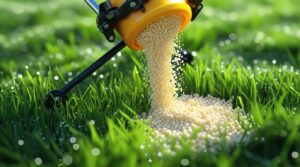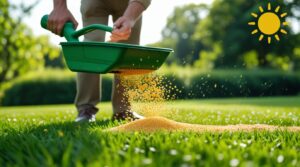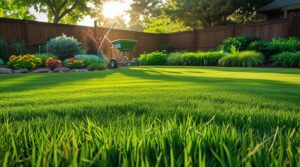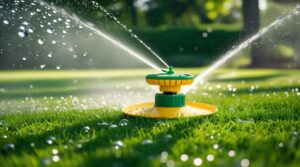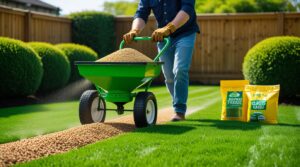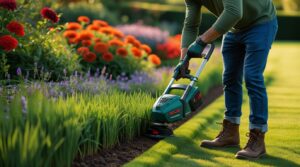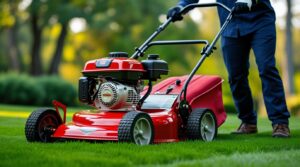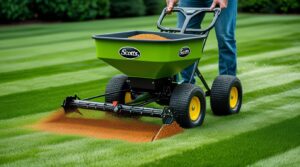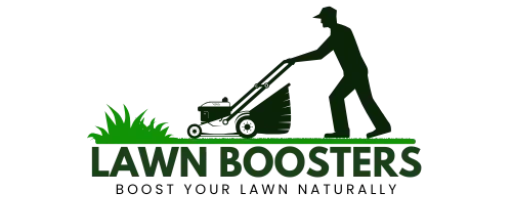Ah, spring! The season when nature stretches, yawns, and comes back to life — and your lawn is no exception. After months of cold dormancy, your grass is hungry, waking up and ready to grow. And if you want that lush, vibrant, envy-of-the-neighborhood kind of lawn, now is the time to act.
Spring is the most important season for lawn fertilization. Why? Because early-season feeding sets the stage for healthy root development, thick growth, and long-lasting color throughout the year. It’s like giving your lawn its first big breakfast after a long winter nap — and trust us, it makes all the difference.
In this guide, we’ll walk you through everything you need to know about choosing the best spring lawn fertilizer for your specific yard. Whether you’re going organic, looking for fast results, or trying to stay on budget, we’ve got you covered. Let’s dig in and give your grass the fuel it needs to flourish!
Why Spring is the Best Time to Fertilize Your Lawn
As winter fades and temperatures begin to rise, your lawn slowly begins to “wake up” from its dormant state. The soil warms, roots reactivate, and new blades of grass start poking through. But just like we need fuel to get going in the morning, your lawn needs nutrients to kick off its growing season strong.
That’s where early-season fertilization comes in. Applying the best spring lawn fertilizer at the right time gives your grass exactly what it craves — nitrogen for rapid greening, phosphorus for root development, and potassium for overall strength. This jumpstart leads to faster, fuller growth, enhanced color, and better resistance to weeds and pests.
Timing is crucial in spring lawn care. For cool-season grasses like Kentucky bluegrass or fescue, early spring (once soil temps reach about 55°F) is ideal. For warm-season grasses like Bermuda or zoysia, wait until late spring when the grass is actively growing and has fully greened up.
Applying fertilizer too early may lead to nutrient runoff or weak root growth. Too late, and your lawn may miss its prime growth window. That’s why knowing when to fertilize the lawn in spring makes all the difference — it’s the first step to achieving that thick, healthy lawn you’ve been dreaming of.
How to Choose the Right Fertilizer for Spring
With so many options on the market, picking the best spring lawn fertilizer can feel overwhelming. But don’t worry — it all starts with understanding what your lawn really needs.
Understand the N-P-K Ratio
The N-P-K number you see on fertilizer bags stands for Nitrogen (N), Phosphorus (P), and Potassium (K). Each plays a vital role:
- Nitrogen boosts lush, green growth.
- Phosphorus strengthens roots.
- Potassium builds overall resilience.
So, a fertilizer labeled 16-4-8 means it contains 16% nitrogen, 4% phosphorus, and 8% potassium. The right NPK fertilizer meaning depends on your lawn’s goals — high nitrogen for quick greening, balanced for general health.
Organic vs. Synthetic Fertilizers
- Organic fertilizers are made from natural materials and improve soil health over time. They’re safe for pets and environmentally friendly.
- Synthetic fertilizers work faster and are more concentrated, but they may require more careful handling.
Liquid vs. Granular
- Liquid fertilizers offer quick absorption and are great for fast results.
- Granular fertilizers are easier to apply, provide slow release, and are ideal for longer-term feeding.
Choose Based on Your Lawn Goals
- Want thicker grass fast? Go for high-nitrogen synthetic blends.
- Need weed control? Look for fertilizers with added pre-emergents.
- Prefer eco-friendly solutions? Choose organic lawn food.
Understanding these lawn fertilizer types helps you match your yard’s needs with the best fertilizer for lawn care success this spring.
When and How to Apply Spring Fertilizer
Timing is everything when it comes to spring fertilizing. Applying the best spring lawn fertilizer at the right moment ensures your grass gets the nutrients it needs, without waste or damage.
Ideal Soil Temperature & Conditions
Before you grab the spreader, check your soil temperature. The sweet spot is around 55°F (13°C) — this usually happens when daytime air temps reach the mid-60s. Avoid applying during heavy rain or drought. A calm, cool morning is best for spreading.
Step-by-Step: How to Apply Lawn Fertilizer in Spring
- Mow Your Lawn First
Trim your grass to a moderate height to prepare for even distribution. - Water Lightly (Optional)
If your soil is dry, a light watering helps the fertilizer stick to the soil, especially for granular types. - Apply the Fertilizer
Use a broadcast or drop spreader for granular, or a hose-end sprayer for liquid fertilizer. Walk in straight, overlapping paths to avoid missed spots. - Water Again
After applying, water thoroughly to activate nutrients and prevent lawn burn — unless you’re expecting rain!
Tools You Might Need
- Broadcast Spreader (for large, open lawns)
- Drop Spreader (for smaller, precise areas)
- Hose-End Sprayer (for liquid lawn food)
Common Fertilizing Mistakes to Avoid
Even with the best spring lawn fertilizer in hand, applying it incorrectly can do more harm than good. Let’s look at a few common mistakes you’ll want to avoid this season.
Over-fertilizing = Burnt Grass
More isn’t always better. Applying too much fertilizer can scorch your lawn, leaving behind dry, yellow patches. Always follow the product’s instructions and measure carefully to avoid over-fertilizing grass.
Applying Right Before Rain
If a heavy rain hits right after application, the nutrients may wash away before your lawn can absorb them, wasting product and polluting runoff areas. Try to apply on a dry day with no heavy rain in the forecast for at least 24–48 hours.
Wrong Spreader Settings
Whether you’re using a drop or broadcast spreader, incorrect settings can lead to uneven coverage, causing streaky growth or overconcentration in spots. Always calibrate your spreader before use.
Not Considering Grass Type or Soil
Different grasses and soil types require different nutrients. A one-size-fits-all approach can lead to poor results. For best outcomes, choose a lawn fertilizer tailored to your grass type and, if possible, conduct a simple soil test.
Avoiding these lawn fertilizer mistakes can save you time, money, and a whole lot of frustration!
Top 7 Best Spring Lawn Fertilizers of 2025
Achieving a lush, green lawn this spring starts with selecting the right fertilizer. Below are seven top-rated options for 2025, each catering to different lawn care needs.
1. Milorganite 6-4-0 Organic Nitrogen Fertilizer
Milorganite is a well-known, slow-release, organic nitrogen fertilizer made from treated sewage sludge. It is widely popular among gardeners and lawn care enthusiasts for its ability to feed plants gradually and improve soil health without harsh chemicals.
Key Features:
N-P-K Ratio: 6-4-0
-
-
-
6% Nitrogen (N): Provides steady, slow-release nitrogen to promote healthy, deep green growth of grass and plants.
-
4% Phosphorus (P): Supports strong root development and flowering.
-
0% Potassium (K): No potassium content.
-
-
Organic Origin:
Milorganite is made from heat-dried microbes that have digested organic waste (treated sewage sludge). It is safe, non-burning, and environmentally friendly.
Slow Release:
The nitrogen is released slowly over time, usually over 6 to 8 weeks, which prevents rapid growth spurts and reduces the risk of fertilizer burn.
Soil Enrichment:
Adds valuable organic matter to the soil, enhancing soil structure, moisture retention, and microbial activity.
Non-Toxic and Safe:
It does not contain synthetic chemicals or salts harmful to pets or children when used as directed.
Pros:
- Provides long-lasting nutrients
- Enhances soil health
- Safe for children and pets
Cons:
- Slower to show visible results
- Distinctive odor
Best For: Homeowners seeking an eco-friendly, pet-safe fertilizer that improves soil quality over time.
2. Scotts Turf Builder Lawn Food 32-0-4
Scotts Turf Builder Lawn Food 32-0-4 is a popular, fast-acting granular fertilizer designed to promote rapid greening and strong growth of lawns. It contains a high percentage of nitrogen, which is essential for lush, green grass, and a small amount of potassium to help strengthen the lawn and improve its resilience.
Key Features:
NPK Ratio: 32-0-4
-
32% Nitrogen (N): Provides a high dose of nitrogen to promote fast, vigorous green growth of lawns.
-
0% Phosphorus (P): No phosphorus, making it suitable for established lawns where phosphorus is generally sufficient in the soil.
-
4% Potassium (K): Helps strengthen grass, improving resistance to drought, heat, and disease.
Fast-Acting Nitrogen:
The high nitrogen content quickly revitalizes lawns, helping them recover from stress and achieve a lush green color.
Slow-Release Technology:
Contains both quick-release and slow-release nitrogen for sustained feeding over several weeks, reducing the need for frequent applications.
Improves Lawn Health:
Potassium content enhances root strength and disease resistance, supporting a more durable lawn.
Versatile Application:
Suitable for all grass types and can be applied any time during the growing season.
Kid and Pet Safe:
When used as directed, it is safe for households with children and pets.
Pros:
- Promotes rapid greening
- Suitable for all grass types
- Easy application
Cons:
- Not organic
- Requires careful application to avoid over-fertilizing
Best For: Those looking for immediate results and a vibrant lawn across various grass types.
3. Pennington UltraGreen Lawn Fertilizer 30-0-4
Pennington UltraGreen Lawn Fertilizer 30-0-4 is a high-nitrogen, phosphorus-free lawn fertilizer designed to promote rapid green-up and vigorous growth. With 30% nitrogen, including a portion of slow-release nitrogen, it provides both immediate and extended feeding to your lawn. The 4% potassium content helps strengthen roots and improve drought and heat tolerance, while 5% iron enhances the lawn’s deep green color and overall health.
Key Features:
NPK Ratio: 30-0-4
-
30% Nitrogen (N): High nitrogen content for fast, vigorous green growth and lawn thickening.
-
0% Phosphorus (P): Phosphorus-free, ideal for established lawns where phosphorus is already sufficient in the soil.
-
4% Potassium (K): Strengthens roots, enhances drought and heat tolerance, and improves overall lawn health.
Fast-Acting & Slow-Release Nitrogen Blend:
Combines quick-release nitrogen for immediate greening with slow-release nitrogen (approximately 10.56%) for sustained feeding that lasts up to 3 months. This helps maintain lawn vigor over time without frequent applications.
Iron Enrichment (5%):
Adds a deep, rich green color to the turf, improving the overall lawn appearance and health.
Improved Stress Resistance:
The potassium and iron content help strengthen lawns against environmental stresses, such as heat, drought, and disease.
Suitable for All Grass Types:
Formulated for cool-season and warm-season grasses, making it versatile for various lawn types.
Resealable Packaging:
Comes in a resealable bag for easy storage and prolonged product freshness.
Pros:
- Feed the lawn for up to 3 months
- Strengthens against heat and drought
- Encourages thick, green growth
Cons:
- Not suitable for phosphorus-deficient soils
- Synthetic composition
Best For: Warm-season grass lawns needing extended feeding and resilience against environmental stress.
4. Espoma Organic All Season Lawn Food 9-0-0
Espoma Organic All Season Lawn Food 9-0-0 is a natural and organic fertilizer formulated to provide essential nutrients to your lawn throughout the year. With a 9-0-0 NPK ratio, it delivers a steady supply of nitrogen, promoting lush green growth without the risk of burning your lawn.
Key Features
NPK Ratio 9-0-0
-
9% Nitrogen: Boosts healthy, green leaf growth.
-
0% Phosphorus: No phosphorus, safe for established lawns with enough phosphorus in the soil.
-
0% Potassium: No potassium, usually added if the soil needs it.
Bio-tone® Beneficial Microbes: Enhances nutrient availability, improves soil structure, and promotes root development.
Slow-Release Nitrogen: Provides long-lasting feeding, reducing the need for frequent applications.
Safe for People, Pets & Planet: Made from natural and organic ingredients, ensuring safety for families and the environment.
No Sludges or Fillers: Contains no harmful chemicals, sludges, or fillers.
Made in the USA: Manufactured by Espoma, a trusted name in organic gardening since 1929.
Pros:
- Made from natural ingredients
- Safe for kids and pets
- Improves soil structure
Cons:
- Lower nutrient content
- May require more frequent applications
Best For: Environmentally conscious homeowners seeking a safe, organic option for steady lawn nourishment.
5. The Andersons PGF Complete 16-4-8
The Andersons PGF Complete 16-4-8 is a professional-grade lawn fertilizer designed to provide complete nutrition for your turf. With a balanced NPK ratio of 16-4-8, it delivers essential nutrients to promote healthy growth, vibrant color, and overall lawn vitality.
Key Features
NPK Ratio 16-4-8
-
16% Nitrogen (N): Promotes lush, green, leafy growth and improves lawn density.
-
4% Phosphorus (P): Supports strong root development and seedling establishment.
-
8% Potassium (K): Enhances stress resistance, disease tolerance, and overall plant health.
Balanced NPK Ratio (16-4-8): Provides 16% nitrogen for lush green growth, 4% phosphorus for strong root development, and 8% potassium for enhanced stress tolerance.
Quick and Slow-Release Nitrogen: Combines fast-acting nitrogen for immediate results with slow-release nitrogen for sustained feeding up to 8 weeks.
Humic DG Technology: Includes 7% Humic DG, a granulated form of humic acid derived from leonardite, which improves soil health and nutrient uptake.bermudagrasscare.com+6Amazon+6How to with Doc+6
Micronutrients and Iron: Enriched with essential micronutrients and 3% iron to promote deep green color and overall turf health.The Andersons Home and Garden
Fine Particle Size: Features super-fine particles for even distribution and better coverage, ensuring uniform nutrient application.The Andersons Home and Garden
Suitable for All Grass Types: Safe and effective for use on all turf types, including cool-season and warm-season grasses.
Pros:
- Balanced nutrient profile
- Contains iron and Humic DG for soil health
- Suitable for all grass types
Cons:
- Higher price point
- Not organic
Best For: Lawn enthusiasts seeking a comprehensive fertilizer that delivers both immediate and sustained results.
6. Safer Brand Lawn Restore Natural Fertilizer 9-0-2
- N-P-K Ratio: 9-0-2
- Type: Organic, slow-release
- Pet-Safe: Yes
Pros:
- Revitalizes soil and lawn health
- Safe for children and pets
- Addresses lawn stress conditions
Cons:
- It may take longer to see results
- Limited availability in some regions
Best For: Homeowners aiming to restore and maintain lawn vitality with an organic, pet-safe product.
7. Simple Lawn Solutions Advanced 16-4-8 Liquid Fertilizer
- N-P-K Ratio: 16-4-8
- Type: Liquid, quick-release
- Pet-Safe: Use caution; allow to dry before pet access
Pros:
- Fast-acting formula
- Easy to apply with a hose-end sprayer
- Enhances lawn color and growth
Cons:
- Shorter duration; may need frequent applications
- Not suitable for phosphorus-restricted areas
Best For: Those seeking a quick green-up and convenient application for small to medium-sized lawns.
Comparison Table:
| Fertilizer Name | N-P-K Ratio | Type | Pet-Safe | Best For |
| Milorganite 6-4-0 | 6-4-0 | Organic (Slow-Release) | ✅ Yes | Organic lawns, long-term soil health |
| Scotts Turf Builder 32-0-4 | 32-0-4 | Synthetic (Quick) | ⚠️ With caution | Fast green-up, all-purpose lawn feeding |
| Pennington Ultragreen 30-0-4 | 30-0-4 | Synthetic (Slow) | ⚠️ With caution | Heat/drought resistance, warm-season grass |
| Espoma Organic All Season 9-0-0 | 9-0-0 | Organic (Slow-Release) | ✅ Yes | Eco-friendly and pet-safe lawn care |
| The Andersons PGF Complete 16-4-8 | 16-4-8 | Synthetic Blend | ⚠️ With caution | Balanced feeding, iron-rich, fast & slow release |
| Safer Brand Lawn Restore 9-0-2 | 9-0-2 | Organic (Slow-Release) | ✅ Yes | Reviving stressed lawns naturally |
| Simple Lawn Solutions Liquid 16-4-8 | 16-4-8 | Liquid (Quick-Release) | ⚠️ Once dry | Quick application, small to medium lawns |
DIY Organic Lawn Fertilizer Options
Prefer a greener, more budget-friendly approach? You don’t always need to buy the best spring lawn fertilizer from the store — some of the best nutrients for your lawn may already be in your backyard.
Top DIY Natural Fertilizer Options:
- Compost Tea: Made by steeping compost in water, this “liquid gold” is rich in microbes and nutrients. Spray it directly onto your lawn for a natural boost.
- Grass Clippings: Leave them after mowing — they return nitrogen to the soil as they break down.
- Epsom Salt: A gentle source of magnesium and sulfur, it helps promote greener grass and stronger blades. Mix with water and spray lightly.
Pros of DIY Organic Lawn Fertilizers:
- Cost-effective
- Eco-friendly and safe for kids/pets
- Improves soil health over time
Cons:
- Results take longer to appear
- Harder to control nutrient balance
- Requires more time and effort
For homeowners who enjoy a hands-on approach, DIY organic lawn fertilizer solutions offer a sustainable, chemical-free alternative to conventional products. However, if you’re aiming for fast, visible results, a natural fertilizer for grass from a trusted brand might still be your best bet.
FAQs About Spring Fertilizer
1. Is organic fertilizer better than synthetic?
It depends on your goals. Organic fertilizers improve soil health over time and are generally safer for pets and the environment. Synthetic fertilizers, on the other hand, work faster and provide quick results, but they require more careful handling.
2. Can I fertilize wet grass?
Yes, you can — but it’s best to apply fertilizer when the grass is slightly damp, not soaked. Wet grass can help granular fertilizer stick, but if it’s too wet, the product may clump or run off.
3. How long does it take to see results?
With synthetic fertilizers, you’ll usually see greener grass within 3–7 days. Organic fertilizers take longer, sometimes 2–4 weeks, as they break down naturally into the soil.
4. Can I use the same fertilizer all year?
Not always. Your lawn has different nutrient needs in spring, summer, and fall. Spring fertilizers focus on growth, while fall ones emphasize root strength. Rotate products based on seasonal needs.
5. Is fertilizer safe for kids & pets?
Most organic options are safe, but always check the label. With synthetic products, keep kids and pets off the lawn until it’s been watered in and dried completely.
Final Verdict
Spring is the season your lawn has been waiting for — and feeding it properly now makes all the difference for lush, healthy growth. Choosing the best spring lawn fertilizer comes down to your specific lawn goals.
Need fast green-up? Go with Scotts Turf Builder 32-0-4 — it delivers quick, vibrant results.
Want an eco-conscious solution? Try Milorganite 6-4-0 or Espoma Organic 9-0-0, both safe for kids, pets, and the planet.
On a budget but still want great performance? Pennington UltraGreen 30-0-4 is a solid, cost-effective option.
No matter your choice, applying the right fertilizer the right way puts you on track for a picture-perfect lawn.







